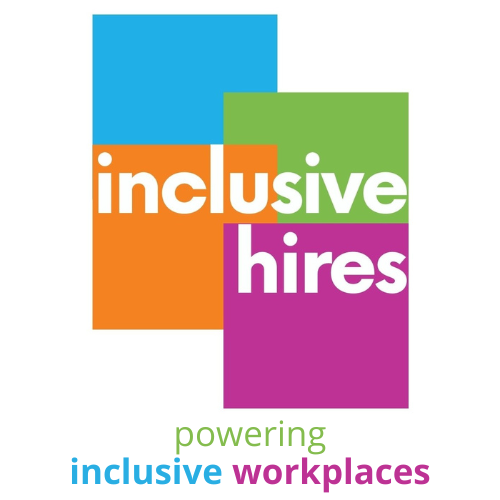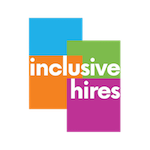
How can you be sure that you’re hiring without being influenced by bias? Bias in recruitment can happen at any stage of the process, from the initial screening of CVs to the final hiring decision.
Bias or prejudice mean a strong inclination of the mind or a preconceived opinion about something or someone. Biases can have a critical and problematic effect on our judgment. They cause us to make decisions in favour of one person or group to the detriment of others, which can stagnate workplaces and limit diversity.
Bias is not just a recruitment issue. It can permeate entire retention and career advancement systems. Despite outward efforts to diversify, bias can still hinder individuals from excelling or being treated equitably, especially when these biases are ingrained within the workplace culture. But by addressing and managing bias at the recruitment stage, organisations can create a foundation of fairness that reduces the likelihood of discrimination later on, ensuring that all employees have an equal opportunity to succeed and progress within the company.
Here are 10 ways to manage bias in the recruitment process, to ensure your organisation fosters a diverse, inclusive workplace:
1. Implement Structured Interviews
A structured interview process involves asking all candidates the same set of questions, in the same order, with the same criteria for evaluation. This approach reduces the impact of interviewer biases, as it allows for a more objective comparison of candidates based on their responses rather than their personal characteristics or communication style. Structured interviews help to ensure that hiring decisions are based on relevant skills and experience.
2. Train Hiring Managers on Bias Awareness
Even the most well-intentioned hiring managers can be influenced by biases. It’s essential to train all interviewers and decision-makers on how to recognise and counteract biases in themselves. Training should cover the various types of bias (e.g. confirmation bias, affinity bias, halo effect) and their potential impact on recruitment decisions. By understanding these biases, interviewers can learn to focus on what truly matters: a candidate’s qualifications, skills, and experience.
3. Use Diverse Interview Panels
Diverse interview panels bring different perspectives and experiences to the hiring process. When interview panels consist of people from various backgrounds, gender identities, and professional experiences, it’s less likely that biases from one individual will dominate the decision-making process. A diverse panel can also help mitigate the effects of “groupthink” and ensure that decisions are made based on a broader set of criteria.
4. Focus on Skills and Experience, Not Personal Traits
While cultural fit is often cited as an important factor in hiring, it can sometimes be a code for biases that exclude candidates from underrepresented groups. Instead of focusing on personal traits, such as an applicant’s communication style or how they “fit in,” emphasise the skills, qualifications, and experiences that are directly related to the job. Evaluating candidates based on these factors helps ensure that the selection process is grounded in merit and “culture add”, and not influenced by subjective judgments.
5. Standardise Evaluation Criteria
To make sure every candidate is evaluated fairly, it’s crucial to establish standardised evaluation criteria. This means clearly defining the competencies and qualifications needed for the job and rating candidates according to these predetermined benchmarks. By using a scoring matrix system that applies to all candidates, you minimise the risk of subjective bias creeping into the decision-making process.
6. Promote Transparency in Job Descriptions
Job descriptions are often the first point of contact between a company and potential candidates, so it’s important to ensure they are clear, transparent, and free from biased language. Avoid phrases like “aggressive,” “strong-willed,” or “go-getter,” which can carry gendered or cultural implications. Instead, focus on the core responsibilities of the role, the skills required, and the qualities that will help a candidate succeed. Be mindful to use inclusive language that welcomes candidates from all backgrounds.
7. Conduct Anonymous CV Screening
One of the most common sources of bias in the hiring process is the review of resumes, where names, photos, and even educational background can unintentionally influence a recruiter’s perception of a candidate. By conducting anonymous resume screening (removing identifying information from resumes), you can ensure that candidates are evaluated based on their skills, experience, and accomplishments, rather than factors that could lead to bias. However, it’s important to note that while anonymous CV screening can help reduce bias at the initial stage, it does not eliminate bias entirely. Once a candidate’s name, background, and identity are revealed later in the process – particularly during interviews – existing biases may resurface. In this sense, anonymous resume screening can merely delay bias rather than eliminate it. Therefore, it should be combined with other strategies, such as bias-awareness training and structured interviews, to ensure a truly fair and unbiased recruitment process.
Anonymous CV screening is only one piece of the puzzle and comprehensive strategies are required throughout the entire recruitment process to manage bias.
8. Implement Pre-Employment Skills Testing
Pre-employment skills tests, such as coding challenges, problem-solving tasks, or writing samples, can be a more objective way to assess a candidate’s abilities. These tests focus directly on the skills necessary for the job, allowing you to make decisions based on performance rather than subjective judgment. Skills testing can also help prevent bias by levelling the playing field for candidates who may not have had the same opportunities to attend prestigious schools or gain specific experiences.
9. Encourage Diverse Candidate Pools
To avoid bias and stereotypes, it’s important to actively recruit from a wide range of talent pools. This includes reaching out to groups that may be underrepresented in your industry or field. Encouraging diversity in your candidate pool helps create a more inclusive recruitment process by ensuring that candidates from all walks of life are considered. By seeking out diverse talent, you not only combat bias but also increase the potential for innovation and creative problem-solving within your organisation.
10. Regularly Review Recruitment Metrics
Collecting and analysing recruitment data is an essential step in identifying and addressing bias in the hiring process. Review metrics such as the gender, race, and background of candidates at each stage of recruitment to uncover patterns that may suggest bias. If certain groups are consistently underrepresented in your hires, you may need to adjust your recruitment strategies. Regularly auditing your recruitment process ensures that you’re consistently improving and making data-driven decisions to reduce bias.
Why Managing Bias in Recruitment is So Important
Reducing bias in recruitment is not just a moral or ethical issue – it is a business imperative. When organisations fail to combat bias in the hiring process, they risk overlooking qualified candidates, missing out on diverse perspectives, and perpetuating a homogeneous workplace culture. By adopting strategies to avoid bias, companies can tap into a larger pool of talent, which ultimately leads to higher performance, innovation, and employee satisfaction.
Creating a fair, transparent, and inclusive recruitment process ensures that all candidates are assessed on their merits, not influenced by biases or stereotypes. It helps attract diverse talent, fosters an environment where employees feel valued, and improves retention rates. Moreover, it enhances your company’s reputation as an employer of choice, which can have a significant impact on attracting top talent and building a strong, positive workplace culture.
By focusing on these strategies, you can create a recruitment process that is not only equitable but also effective in bringing in the best talent for your organisation. The benefits of reducing bias extend far beyond hiring – they contribute to thriving, innovative, and more inclusive workplaces.
Bias is something that is often unconscious and difficult to entirely avoid, so the goal is to actively address and mitigate bias throughout the process rather than attempting to eliminate it completely. It’s about creating a system that recognises and corrects for bias when it arises.
Download our ’10 Ways to Manage Bias in the Recruitment Process’ infographic here >>>
~ Inclusive Recruiting
Regularly auditing your recruitment process will ensure that you’re consistently improving and making data-driven decisions to reduce bias. Reach out to learn more about how we can assist you with this.

